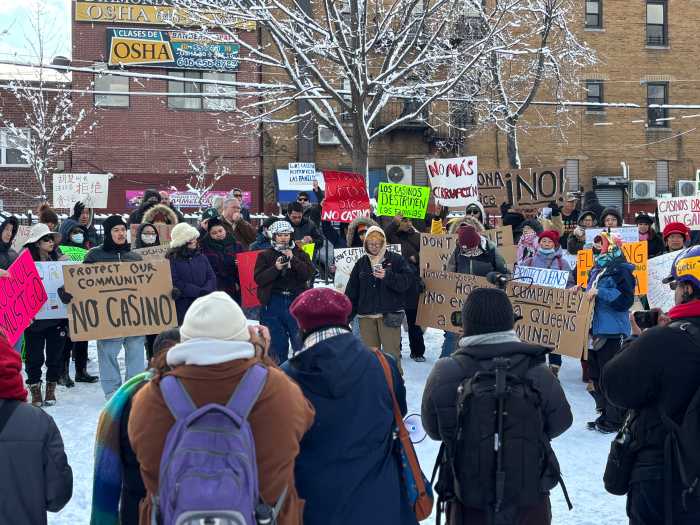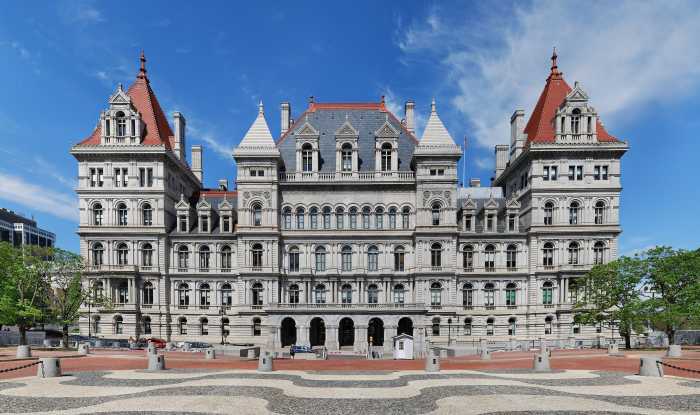As New York City prepares for another hurricane season on the one-year and 10-year anniversaries of Hurricane Ida and Superstorm Sandy, which ravaged parts of Queens, a new report released on Monday, July 18, by the Regional Plan Association (RPA) outlines how the state and city should address growing flood risks facing thousands of residents, especially those living in basement apartments.
The report, titled “Preventing Another Ida: Stormwater Management and Basement Apartments in Central Queens,” explores the intersection between housing affordability, climate change and health.
“New York City is dealing with two simultaneous crises: the extreme lack of affordable housing and climate change-fueled weather events,” said Tom Wright, president and CEO at RPA. “Our research indicates that increased investments in green, flood-proofing infrastructure, in combination with easing restrictions on ADUs in New York and providing funding to bring them up to code, can lead to safer homes for folks living in basement apartments. We need to start viewing extreme weather events not only as climate change issues but also as public health crises that most severely impact low-income communities.”
According to the report, central Queens would need approximately 40 times more green infrastructure capacity to manage stormwater-associated weather-related threats, and such threats are made worse for many low-income immigrant residents by the city’s housing crisis.
Central Queens — which includes the neighborhoods of Jackson Heights, Woodside, Elmhurst and Corona — is one of the few areas left in NYC where low and middle-income houses can afford places to live, according to RPA. Too often, however, these residences are unregulated, illegal basement apartments. Consequently, Central Queens saw some of the worst flooding impacts in the region from the remnants of Hurricane Ida less than a year ago.
In September of 2021, FDNY firefighters and NYPD officers arrived at a Woodside residence where a family of three was found dead in their basement apartment that was severely flooded. Many basement apartments in the homes on the block of 64th Street were damaged. According to residents, the water level was particularly high in that location.
RPA’s report finds that approximately 31,000 of central Queens’ low-density residential buildings have below-grade basements, which property owners frequently convert into unlicensed apartments.
Due to the lack of regulation and licensing from the city, thousands of these apartments are at high risk of flooding during extreme rainfall or cloudbursts.
The report also finds only three acres of land in Central Queens are currently devoted to flood mitigation, and that the capacity of green infrastructure in the area would need to expand 40 times over in order to completely manage the volume of stormwater associated with flood loss risk in the area.
The city could potentially achieve this by converting just 5% of the total right-of-way space within the study area for stormwater management infrastructure, according to RPA. New York City does have a Green Infrastructure program charged with meeting some of this need, but the program is considerably behind on its goal of managing 1.7 billion gallons a year by 2030.
RPA’s report lays out several recommendations for the city to combat the rising flood risks for basement apartment residents in central Queens and citywide, including:
- Addressing flooding and cloudbursts as a health equity issue.
- Increasing stormwater management capacity.
- Legalizing and supporting accessory dwelling units (ADU).
- Improving information about ADU locations and flood risk.
Queens Borough President Donovan Richards said RPA’s report emphasizes the need for some of what many Queens residents have called on the city to seriously invest in for years: Green infrastructure to mitigate storm damage and the legalization of basement apartments to bring them up to code.
“If we’re serious about preventing the devastating loss we saw a year ago with Hurricane Ida and 10 years ago with Hurricane Sandy, we must act now and implement the solutions in this report and put our most at-risk communities first,” Richards said.
In May, forecasters at the National Oceanic and Atmospheric Administration (NOAA) Climate Prediction Center, predicted an above-average hurricane activity this year — which would make it the seventh consecutive above-average hurricane season.
For the 2022 Atlantic hurricane season, which extends from June 1 to Nov. 30, NOAA is forecasting a likely range of 14 to 21 named storms (winds of 39 mph or higher), of which 6 to 10 could become hurricanes (winds of 74 mph or higher), including three to six major hurricanes (category 3, 4 or 5; with winds of 111 mph or higher). NOAA provides these ranges with a 70% confidence.
“As we reflect on another potentially busy hurricane season, past storms — such as Superstorm Sandy, which devastated the New York metro area 10 years ago — remind us that the impact of one storm can be felt for years,” said NOAA Administrator Rick Spinrad, Ph.D. “Since Sandy, NOAA’s forecasting accuracy has continued to improve, allowing us to better predict the impacts of major hurricanes to lives and livelihoods.”

































